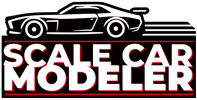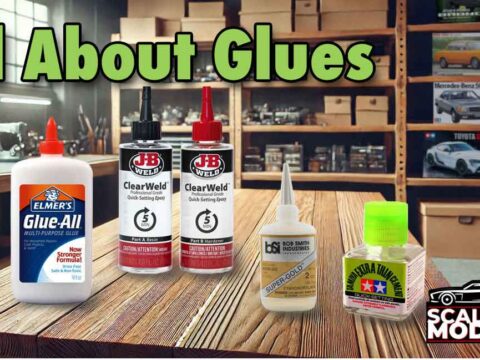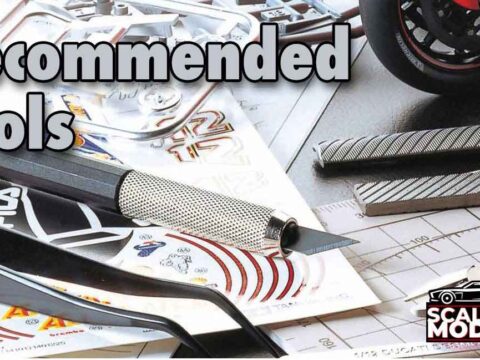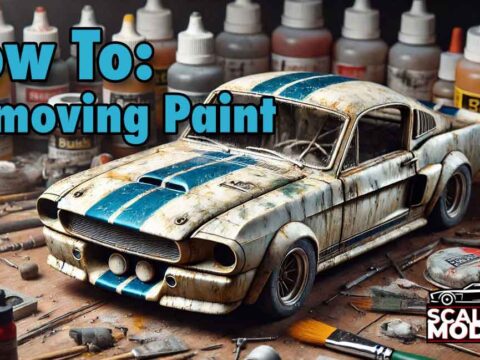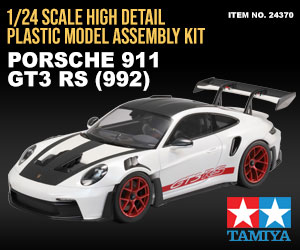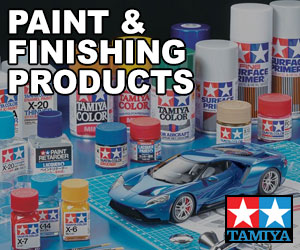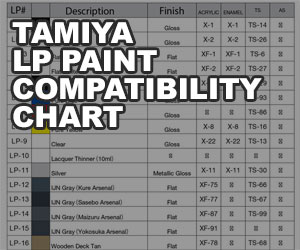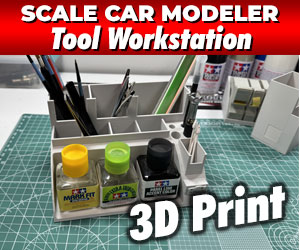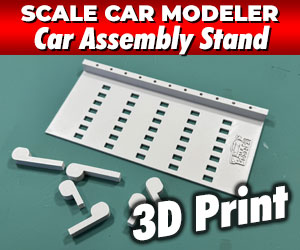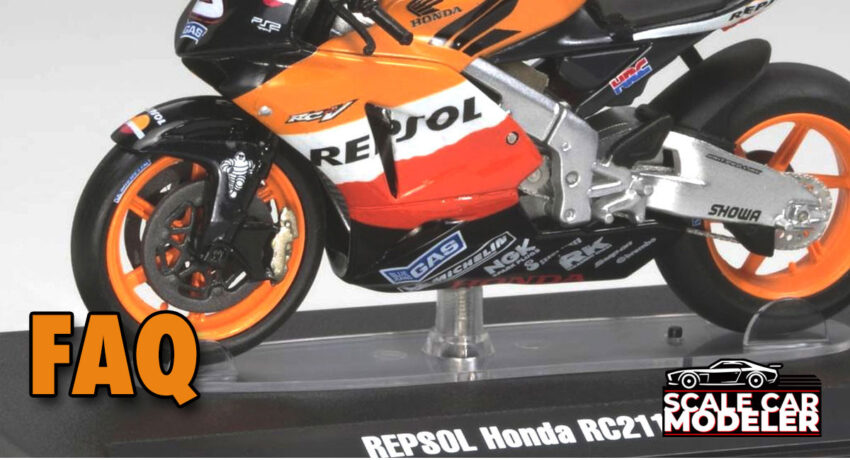
Frequently Asked Questions
So you've read all of our Beginner's Guide articles but you still have questions ... well, hopefully this page can help complete your quest for model building dominance!
General Questions
Q: What are the different types of model car kits?
Plastic, resin, metal, die-cast and wooden kits, with varying levels of detail and difficulty.
Q: What skill levels do model car kits come in?
Typically labeled as Skill Level 1 (snap-together, no glue), Level 2 (basic glue assembly, simple painting) and Level 3-5 (advanced detailing and modifications). More information can be found on our Beginner's Guide Introduction page.
Q: What scale should I choose for my first model car?
Common scales include (from smallest to largest) 1/24, 1/25, 1/20 and 1/12. Larger scales offer more detail while smaller ones save space. More information can be found on our Beginner's Guide Introduction page.
Q: Where can I buy model car kits?
Online stores, hobby shops, modeling conventions and secondhand marketplaces. See our Links for some of our favorite model purchasing spots!
Q: How long does it take to build a model car kit?
Anywhere from a few hours to several weeks, depending on detail and complexity. Remember, though, it's not a race! Take your time and you'll be rewarded with a beautiful shelf queen you can show off to all your friends!
Choosing the Right Kit
Q: What should I consider when choosing my first model car kit?
Choose a beginner-friendly scale (1/24 or 1/25), a simple design and a widely available model. More information can be found on our Beginner's Guide Introduction page.
Q: Are there differences between classic and modern model kits?
Classic kits may require extra work (flash removal, poor fitment, etc) while modern kits often have precision-molded parts. Because of updated technology, newer kits will also have more details molded in or included on parts trees.
Q: What are the most reputable model car kit brands?
The most common (and reputable) kits will be available from (in alphabetical order) AMT, Aoshima, Fujimi, Hasegawa, Italeri, Monogram, MPC, Revell and Tamiya. More information can be found on our Resources page.
Q: Can I mix parts from different kits?
Absolutely! This is one way to create a totally custom build that may not be currently available, Do be mindful, however, of scale differences and necessary modifications.
Q: What’s the difference between snap-together and glue kits?
Snap kits don’t require glue or paint, whereas glue kits allow for more customization.
Tools & Supplies
Q: What essential tools do I need for building model cars?
Hobby knife, sprue cutters, sanding sticks, tweezers, clamps and glue. More detailed information can be found on our Beginner's Guide Tools You'll Need page.
Q: What type of glue should I use for model cars?
Plastic cement for plastic parts, CA (super glue) for metal and resin and white glue for clear parts.
Q: How do I properly cut parts off the sprue?
Using sprue cutters, snip close to the part, then sand any rough edges.
Q: What’s the best way to sand model parts?
Use fine-grit sandpaper (400-1000 grit), sanding sticks or files for smooth edges.
Q: Do I need a magnifying lamp for detailing?
While not necessary, it is helpful for seeing small details.
Q: What type of paint should I use for model cars?
Acrylics, enamels or lacquers, depending on preference and finish.
Q: Can I use regular spray paint on model cars?
Yes, but choose hobby-specific spray paints for a smoother finish.
Q: What’s the best airbrush for painting model cars?
A dual-action airbrush with a fine nozzle (0.3mm or smaller).
Q: What’s the best way to clean my airbrush?
Use appropriate thinner or cleaner and disassemble parts for deep cleaning.
Q: Are primer coats necessary before painting?
Yes, they help paint adhere better and reveal surface imperfections for additional sanding.
Assembly & Construction
Q: What’s the best way to glue small parts?
Use a fine applicator, toothpick or small brush for precise placement.
Q: How can I prevent glue from fogging clear parts?
Don't use it! Instead, try white glue or PVA glue for clear parts.
Q: How do I keep small parts from getting lost?
Use a small container or a magnetic parts holder during assembly.
Q: How can I improve panel fit and alignment?
Dry-fit pieces before gluing and sand if necessary.
Q: How do I make opening doors, hoods and trunks?
Use hinge kits or scratch-build with thin metal rods. This is more of an advanced technique but, with patience, can be done effectively.
Painting & Finishing
Q: How do I get a smooth paint finish?
Apply thin, even coats and wet sand between layers if necessary.
Q: Do I need to polish my paint job?
No, however polishing helps achieve a high-gloss finish.
Q: What’s the best way to mask areas before painting?
Use masking tape, liquid mask or frisket film. More information can be found on our Beginner's Guide All About Painting page.
Q: How do I prevent paint from pooling in the panel lines?
Apply multiple light, misting coats instead of one heavy coat.
Q: How long should I wait between paint coats?
At least a few hours; check manufacturer instructions. This will also depend on the current temperature where the model is sitting.
Q: How do I apply decals without bubbles?
Use a decal setting solution (like Tamiya's Mark Fit) and a soft brush to smooth them down.
Q: How do I seal decals after application?
Apply a clear coat (gloss or matte) after application to protect them. It's a good idea to wait 24 hours (before applying) to make sure all the decals have completely dried.
Detailing & Customization
Q: What’s the best way to add realistic weathering effects?
Try washes, dry brushing and pastels for rust, dirt and wear effects. Mr. Hobby Weathering Pastel Sets work great for this.
Q: Can I add LED lights to my model car?
Of course! You can use small LEDs, resistors and battery power fitted in the car or in the display base.
Q: How can I make realistic chrome trim?
Use Molotow Chrome Markers, Bare-Metal Foil or Alclad Chrome Paint.
Q: How do I make realistic-looking tires?
Lightly sand the tread, apply a flat coat or use weathering powders.
Q: How can I add realistic engine detailing?
Add wiring, hoses and metal-look paint. You can also use Tamiya's Panel Line to add depth effects.
Q: How do I create custom license plates?
Print decals or use photo-etched plates.
Troubleshooting & Repairs
Q: What should I do if I over-glue a part?
If it's super glue (CA), you can use a de-bonder. You can also, if possible, sand the plastic glue mistakes carefully.
Q: How do I fix a broken part?
Use plastic glue for plastic parts or CA glue for resin/metal. You can also drill a hole and insert a reinforcing pin, if possible.
Q: What do I do if my paint job turns out uneven?
Sand it smooth and repaint in thin layers.
Q: How can I remove fingerprints from my model?
Lightly buff with a microfiber cloth or polish with a fine abrasive.
Q: What’s the best way to fix decal placement mistakes?
Wet the decal with a setting solution and reposition it. For best results, use something like Tamiya's Mark Fit Solution.
Q: How do I keep dust off my model while painting?
Work in a clean, enclosed space and use a tack cloth to remove any dust prior to painting.
Q: Can I strip and repaint a model if I make a mistake?
Actually, yes. Use brake fluid, isopropyl alcohol or commercial paint stripper. Just be careful during the process.
Q: Why are my decals silvering?
Silvering occurs due to air trapped under decals; use Tamiya's Mark Fit Solution to soften them and reposition.
Q: How do I fix cloudy clear parts?
Polish with fine grit sandpaper or dip in Future floor polish.
Q: Why is my clear coat cracking?
Likely due to incompatible paint layers; always test compatibility first. More information can be found on our Beginner's Guide All About Painting page.
Display & Storage
Q: How should I store finished model cars?
Best case scenario - in a dust-free case, away from sunlight and humidity. Amazon had multiple solutions, including DIY diorama setups!
Q: What’s the best way to transport model cars to shows?
Use foam-padded boxes or display cases with secure mounts.
